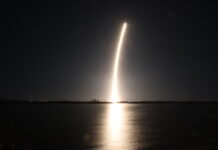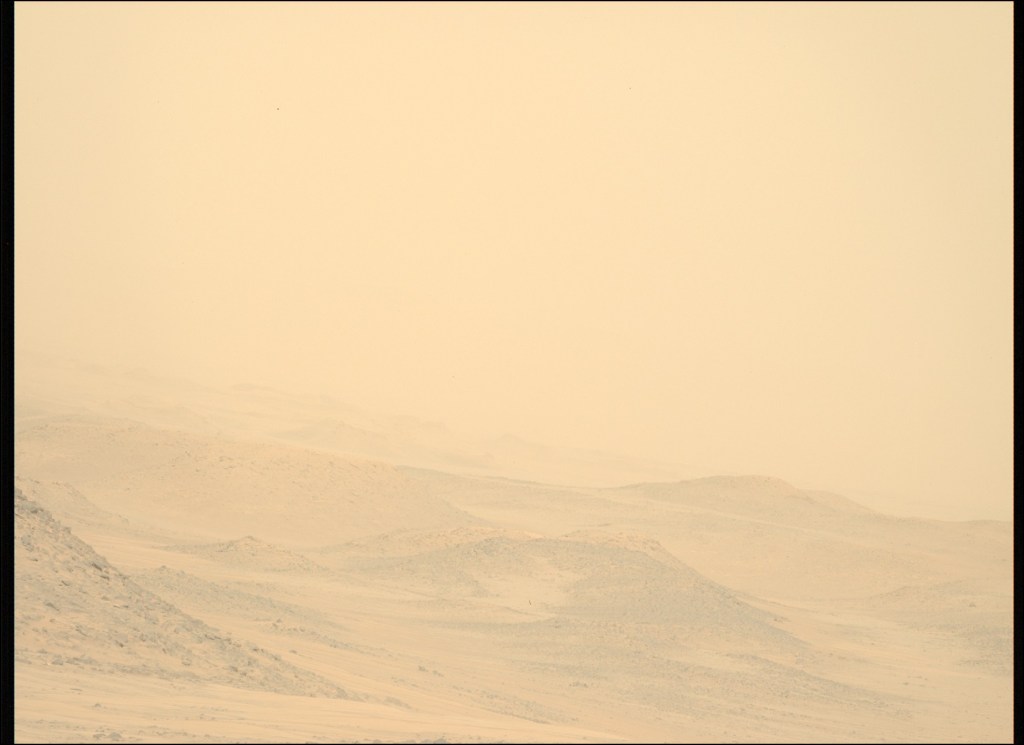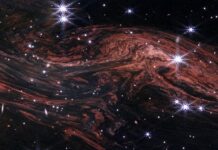Dust-Storm Season on Mars: A Closer Look at Martian Weather Patterns
It is dust-storm season on Mars! Over the past couple of weeks, as the exploration team has been ascending the Jezero Crater rim, scientists have observed a noticeable increase in the amount of dust in the Martian atmosphere. This occurrence is not unexpected; in fact, dust activity on Mars typically reaches its peak around this time of the Martian year, which corresponds to early Spring in the northern hemisphere.
This increase in atmospheric dust has caused the views back toward the Jezero Crater to appear hazier than usual. While this might seem like a minor inconvenience for those curious about the Martian landscape, it has provided atmospheric scientists with a valuable opportunity to study dust storms on Mars more closely. By observing these dust storms, scientists can gain insights into how they form, develop, and spread across the planet.
Understanding Martian Dust Storms
Dust storms on Mars are a well-documented phenomenon. Unlike Earth, Mars has a much thinner atmosphere, which means that dust particles can be lifted more easily by the winds. These dust particles are primarily composed of fine-grained materials, including silicate minerals. When the winds on Mars reach sufficient speeds, they can lift these particles into the atmosphere, creating dust storms that can cover vast areas of the planet.
One of the primary reasons that dust activity increases during early Spring in the northern hemisphere of Mars is due to the planet’s axial tilt and its elliptical orbit around the Sun. As Mars moves closer to the Sun, the increased solar energy heats the surface, causing temperature differences that generate strong winds. These winds, in turn, lift dust particles from the surface, creating the dust storms that scientists are now observing.
The Jezero Crater and Its Significance
The Jezero Crater, where this increased dust activity is being monitored, is of particular interest to scientists. This ancient crater, which is believed to have once contained a lake, is a prime location for studying the geological history of Mars. The presence of minerals, such as clays and carbonates, suggests that water once existed in this area, making it an ideal site for searching for signs of past life.
The current mission in the Jezero Crater aims to collect rock and soil samples that could provide clues about the planet’s past environment. By studying the dust storms in this region, scientists can better understand how these weather patterns may have influenced the geological processes that shaped the crater.
Impact on Mars Missions
The increased dust in the Martian atmosphere has implications for ongoing and future missions to the Red Planet. For instance, the haze caused by the dust can affect the performance of solar panels on rovers and landers. Dust accumulation on solar panels can reduce their efficiency, limiting the amount of power available for scientific instruments and communication with Earth.
However, the study of dust storms also presents opportunities for developing new technologies to mitigate these challenges. For example, engineers are working on ways to design more efficient solar panels that can withstand dust accumulation. Additionally, understanding the behavior of dust storms can help mission planners develop strategies to protect equipment and ensure the success of future missions.
The Role of Atmospheric Scientists
Atmospheric scientists play a crucial role in studying Martian dust storms. By analyzing data collected from various instruments on Mars rovers and orbiters, they can create detailed models of the planet’s atmosphere. These models help scientists predict the behavior of dust storms, including their formation, duration, and impact on the Martian surface.
One of the key instruments used in this research is the Mars Environmental Dynamics Analyzer (MEDA), which is part of the Perseverance rover. MEDA measures various atmospheric parameters, such as temperature, humidity, and wind speed, providing valuable data for understanding Martian weather patterns. By combining this data with observations from other missions, scientists can gain a comprehensive understanding of the factors that drive dust storms on Mars.
Broader Implications for Planetary Science
The study of Martian dust storms has broader implications for planetary science. By comparing dust storms on Mars with similar phenomena on Earth and other planets, scientists can gain insights into the fundamental processes that shape planetary atmospheres. For example, understanding how dust particles interact with solar radiation and atmospheric gases can help scientists develop more accurate climate models for both Mars and Earth.
Furthermore, the study of Martian dust storms can inform our understanding of the potential for human exploration of Mars. Dust storms pose significant challenges for human missions, including the risk of equipment damage and health hazards for astronauts. By studying these storms in detail, scientists can develop strategies to mitigate these risks and ensure the safety of future human explorers.
Good to Know: The Scale of Martian Dust Storms
It’s worth noting that Martian dust storms can vary greatly in scale. Some storms are localized, affecting only small regions of the planet, while others can grow to encompass the entire planet. These planet-wide storms, known as global dust storms, can last for weeks or even months, significantly altering the planet’s climate during that time.
One of the most famous global dust storms occurred in 2018, when a massive storm enveloped the entire planet, obscuring the surface from view. This storm had a significant impact on the Opportunity rover, which relied on solar panels for power. The dust accumulation on the panels ultimately led to the end of the rover’s mission after nearly 15 years of exploration.
Reactions and Reviews
The increased dust activity on Mars has garnered attention from the scientific community and space enthusiasts alike. Many researchers are excited about the opportunity to study these dust storms in greater detail, as it could lead to new discoveries about the Red Planet’s climate and geology.
Dr. Maria Zuber, a planetary scientist at MIT, commented on the significance of these observations: "Understanding Martian dust storms is crucial for both robotic and human exploration. By studying these storms, we can develop better technologies and strategies to ensure the success of future missions to Mars."
Similarly, Dr. Bruce Jakosky, a professor at the University of Colorado Boulder, highlighted the broader implications of this research: "Dust storms on Mars provide a natural laboratory for studying atmospheric processes that are relevant to other planets, including Earth. The insights gained from this research can help us better understand the dynamics of planetary atmospheres and improve our climate models."
Conclusion
As dust-storm season continues on Mars, the increased dust activity provides a unique opportunity for scientists to study these fascinating weather patterns. By monitoring the dust storms in the Jezero Crater and analyzing data from various instruments, researchers can gain valuable insights into the formation, development, and impact of these storms on the Martian environment.
This research not only advances our understanding of Mars but also has broader implications for planetary science and future exploration missions. As we continue to explore the Red Planet, the knowledge gained from studying its dust storms will be instrumental in overcoming the challenges posed by this harsh and dynamic environment.
Whether you’re a space enthusiast or a curious reader, the study of Martian dust storms offers a glimpse into the complexities of planetary atmospheres and the ongoing quest to uncover the mysteries of our solar system.
For more Information, Refer to this article.
































